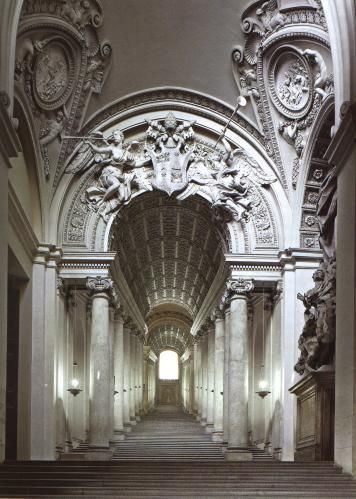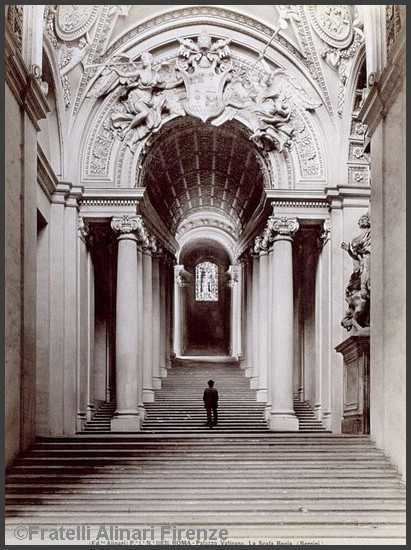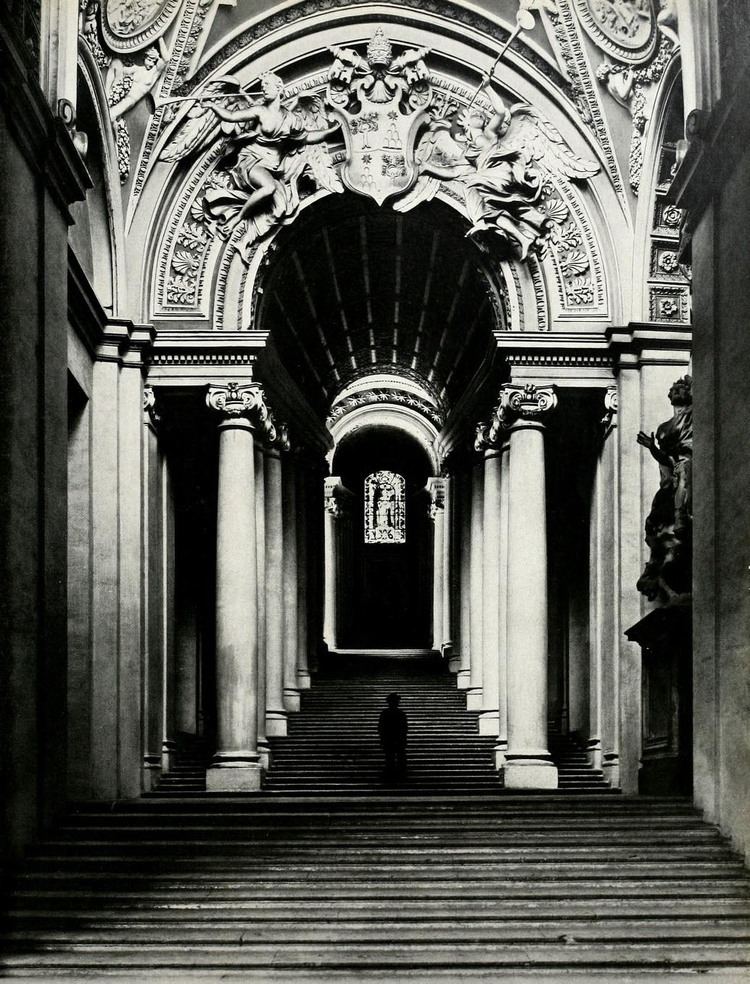 | ||
Similar St Peter's Baldachin, Sant'Andrea al Quirinale, Villa Farnese, Sala Regia, Santa Maria della Vittoria | ||
Scala Regia ([ˈskaːla ˈreːɡia] and [ˈskaːla ˈreːdʒia]; English: Royal Staircase) is a flight of steps in the Vatican City and is part of the formal entrance to the Vatican. It was built by Antonio da Sangallo the Younger in the early 16th century, to connect the Apostolic Palace to St. Peter's Basilica, and restored by Gian Lorenzo Bernini from 1663 to 1666.
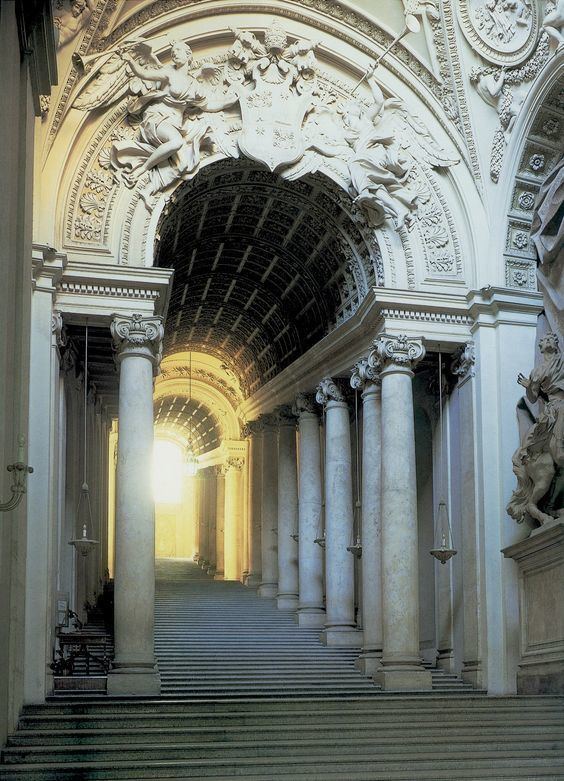
The site for the stairs, a comparatively narrow sliver of land between church and palace, is awkwardly shaped with irregular converging walls. Bernini used a number of typically theatrical, baroque effects in order to exalt this entry point into Vatican. The staircase proper takes the form of a barrel-vaulted colonnade that necessarily becomes narrower at the end of the vista, exaggerating the distance. Above the arch at the beginning of this vista is the coat of arms of Alexander VII, flanked by two sculpted angels.
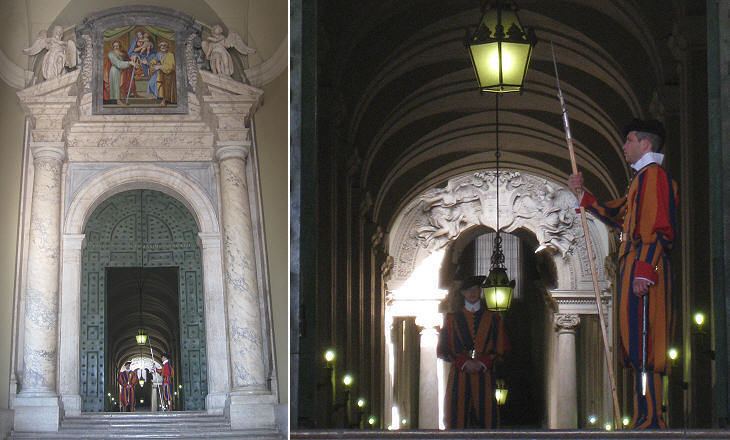
Finally at the base of the stairs, he placed his equestrian statue of the Roman emperor Constantine the Great. It is meant to display the event, before the Battle of the Milvian Bridge when at Saxa Rubra north of Rome along the Tiber, Constantine sees a vision of the cross with the words In Hoc Signo Vinces (In this sign, you will conquer). The phrase appears prominently placed as a motto on a ribbon unfurled with a passion cross to its left, beneath a window over the Scala Regia, adjacent to the statue of Constantine. Emperors and other monarchs, having paid respects to the Pope, descended the Scala Regia, and would observe the light shining down through the window, with the motto, reminiscent of Constantine's vision, and be reminded to follow the Cross.

In Bernini's statue of Constantine, he is awed and his horse rears, as Constantine realizes that he will win only with the power of the Christ. The moral of this story would not have been lost upon royal visitors to the pope, or for that matter, Cardinals accompanying a deceased pontiff's cortege, who are meant to see the leader of the church as the embodiment of the divine power that over-rules the kings of the world. This theme is often repeated in Vatican artworks such as Giulio Romano’s fresco of The Battle of Milvian Bridge, located in the Sala di Costantino ("Hall of Constantine") as well as the marble relief in St. Peter's of Algardi’s Fuga d’Attila.
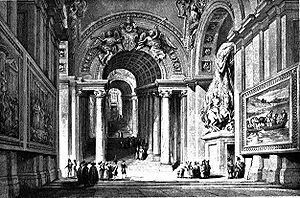
Pope Clement IX later installed a sculpture of Charlemagne in the opposite portico of St. Peter's Basilica as a pendant to that of Constantine.
